In the realm of child development, fostering a growth mindset has emerged as a powerful concept that promotes resilience, adaptability, and long-term success. Coined by psychologist Carol S. Dweck, a growth mindset is the belief that abilities and intelligence can be developed through dedication, hard work, and perseverance. It contrasts with a fixed mindset, where individuals believe that their traits and abilities are fixed and unchangeable.
The importance of cultivating a growth mindset in children cannot be overstated. It lays the foundation for a positive attitude towards learning, challenges, and personal growth, influencing various aspects of their lives, from academic achievements to emotional well-being. By embracing a growth mindset, children are empowered to view setbacks and failures as opportunities for learning and growth, rather than as indicators of their limitations.
This essay will delve deeper into the concept of growth mindset activities for kids and explore its significance in child development. We will discuss the characteristics of a growth mindset, the role of parents and educators in fostering it, and the numerous benefits it offers to children as they navigate the complex and ever-changing world around them. Through understanding and cultivating a growth mindset, children can unlock their full potential and thrive in all areas of their lives.
Table of contents
- Benefits of fostering a growth mindset activities for kids
- Activity 1: “The Power of Yet” Jar
- Activity 2: “Obstacle Course of Challenges”
- Activity 3: “Mistake of the Day”
- Activity 4: “Goal-Setting Vision Board”
- Activity 5: “Stretching Comfort Zones”
- Activity 6: “Feedback Corner”
- Activity 7: “Growth Mindset Role Models”
- Activity 8: “Mindset Mindfulness”
- Activity 9: “Gratitude Jar”
- Activity 10: “Growth Mindset Reflections”
- Conclusion
- Frequently Asked Questions
Benefits of fostering a growth mindset activities for kids
A growth mindset is a belief that intelligence, talents, and abilities can be developed through effort, perseverance, and learning from failure. By fostering growth mindset activities for kids, we equip them with a powerful tool that can help them overcome challenges, embrace learning, and achieve their full potential. In this article, we will explore the benefits of fostering a growth mindset through various activities for kids.
Engaging kids in activities for kids that promote growth mindsets can foster their belief in their own potential and resilience.

Embracing Challenges
One of the fundamental aspects of a growth mindset is the willingness to embrace challenges. Children with a growth mindset view challenges as opportunities for growth rather than obstacles.
By encouraging kids to take on new and challenging tasks, we help them develop resilience, problem-solving skills, and a sense of accomplishment when they overcome difficulties. Activities that promote this mindset could include puzzles, brainteasers, science experiments, or even learning a new instrument or sport.
Developing Perseverance and Resilience
Children with a growth mindset understand that setbacks and failures are part of the learning process. They see these moments as opportunities to learn and improve, rather than reasons to give up.
By engaging kids in activities that require perseverance and resilience, such as building complex Lego structures or participating in team sports, we teach them the value of hard work and the importance of bouncing back from setbacks. This resilience will serve them well throughout their lives, enabling them to face challenges head-on and persevere despite obstacles.
Cultivating a Love for Learning
When children develop a growth mindset, they become motivated to learn and explore new things. They understand that their abilities can be developed through effort and practice, leading to a thirst for knowledge and a passion for continuous learning.
Engaging kids in activities that stimulate their curiosity, such as reading, experimenting, or engaging in creative projects, helps them develop a love for learning. By fostering this mindset, we lay the foundation for a lifetime of intellectual growth and personal development.
Encouraging a Positive Attitude
Children with a growth mindset have a positive attitude toward themselves and others. They believe in their ability to improve and understand that intelligence and talents are not fixed traits. Cultivating positive habits goes hand in hand with developing a positive attitude. By consistently engaging in actions that foster growth, gratitude, and kindness, individuals can shape their perspective to see challenges as opportunities, setbacks as learning experiences, and approach life with an optimistic and resilient mindset.
This positive attitude translates into increased self-confidence, reduced fear of failure, and a willingness to take on new challenges. Engaging kids in activities that promote collaboration, teamwork, and constructive feedback, such as group projects, team sports, or community service, helps them develop a positive attitude toward themselves and others.
Nurturing a Healthy Self-Image
Fostering a growth mindset helps children develop a healthy self-image. They understand that their worth is not determined by their innate abilities but by their effort, attitude, and willingness to learn and grow. Providing proper kids nutrition supports the development of growth mindsets. A well-nourished body contributes to cognitive function, enabling children to approach challenges with clarity and adaptability.
This mindset frees them from the constraints of perfectionism and comparison, allowing them to focus on personal growth and improvement. Activities that encourage self-reflection, goal-setting, and self-expression, such as journaling, art, or mindfulness exercises, can contribute to nurturing a healthy self-image.
Activity 1: “The Power of Yet” Jar
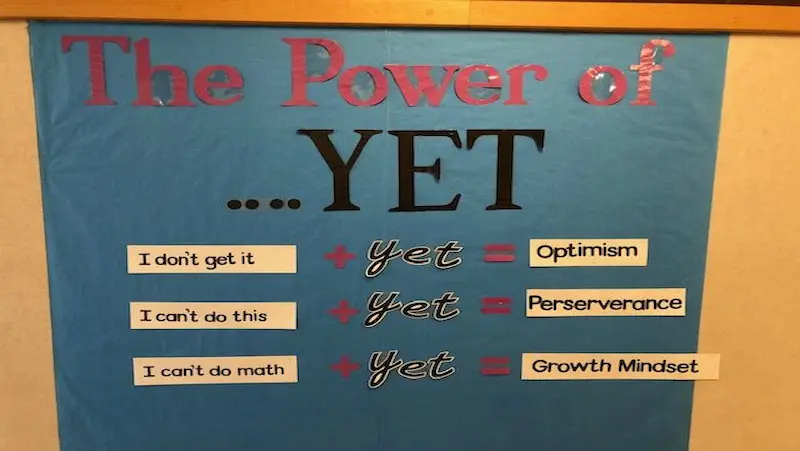
Step 1: Creating the “Yet” Jar
To begin, you’ll need the following materials:
1. A glass jar or container
2. Colored paper or index cards
3. Pens or markers
4. Decorative materials (optional)
Instructions:
1. Choose a suitable jar or container to hold the “Yet” notes. It can be a mason jar, an empty jam jar, or any container of your preference.
2. Decorate the jar if desired, using stickers, ribbons, or other decorative materials that your child finds appealing.
3. Cut the colored paper or index cards into small, equal-sized pieces. These will serve as the “Yet” notes.
4. Place the “Yet” notes and writing materials near the jar, making them easily accessible.
Step 2: Encouraging Children to Write Down Challenging Tasks
The “Yet” jar works by encouraging children to embrace challenges and view them as opportunities for growth. Here’s how you can involve your child in the process:
1. Explain the concept of the “Yet” jar to your child. Emphasize that it is a tool to help them develop a growth mindset and overcome challenges.
2. Encourage your child to identify tasks or activities they find challenging. It could be anything from learning a new skill, solving a complex math problem, or overcoming a fear.
3. Together, brainstorm a list of these challenging tasks. Write them down on the “Yet” notes, with each task on a separate note.
4. Explain to your child that instead of feeling discouraged by these challenges, they will add the “Yet” notes to the jar as a reminder that they haven’t mastered those tasks “yet.”
Step 3: The Power of the “Yet” Jar
The “Yet” jar serves several important purposes in promoting perseverance and a belief in continuous improvement:
Shifting the Mindset: By acknowledging that they haven’t achieved something “yet,” children learn to embrace challenges as opportunities for growth. They understand that their abilities can improve with effort and perseverance.
Celebrating Progress: As children work on their challenging tasks, they can revisit the “Yet” jar and witness the progress they have made. This serves as a tangible reminder of their growth, boosting their self-confidence and motivation.
Fostering Resilience: Encountering setbacks and failures is a natural part of the learning process. The “Yet” jar encourages children to persevere in the face of obstacles, teaching them resilience and the importance of not giving up.
Cultivating a Growth Mindset: The “Yet” jar promotes the belief that abilities and intelligence are not fixed traits but can be developed through dedication and effort. This mindset encourages children to seek out new challenges and approach them with enthusiasm.
Activity 2: “Obstacle Course of Challenges”
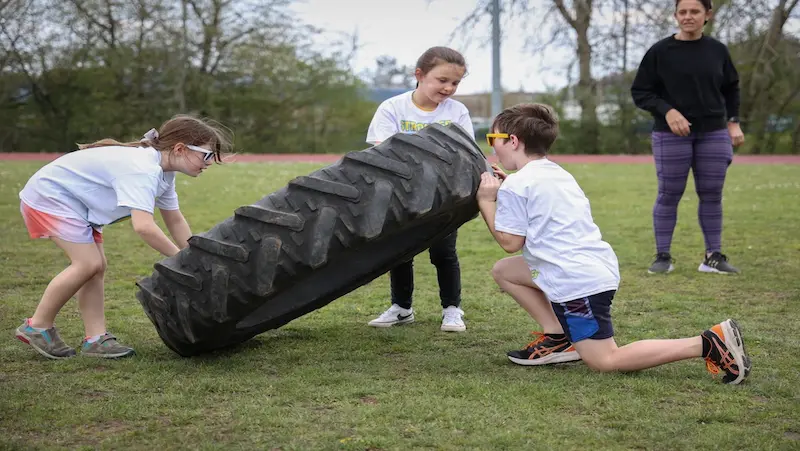
Setting Up the Obstacle Course
Identify a suitable location: Look for a spacious area where you can set up the obstacle course. It could be a park, a large backyard, or even an indoor space with enough room for participants to navigate through the challenges.
Determine the challenges: Brainstorm a variety of physical and mental challenges that participants will encounter along the course. These challenges should require problem-solving skills, physical agility, and mental resilience. Some examples include rope climbing, balance beams, puzzle-solving stations, and team-building activities.
Arrange the challenges strategically: Design the course in a way that progressively increases the difficulty level. Start with simpler challenges to warm up participants and gradually introduce more complex obstacles. This will allow participants to build confidence and develop their problem-solving skills as they progress through the course.
Ensure safety measures: Safety should always be a top priority. Inspect the course for any potential hazards and take necessary precautions. Provide safety equipment such as helmets, knee pads, and ropes where needed. Additionally, have trained personnel or volunteers stationed throughout the course to provide guidance and assistance.
Reframing Challenges as Opportunities for Growth
Challenges often come with a negative connotation, but they can also be transformative experiences that propel personal growth. It’s essential to encourage participants to reframe their perception of challenges and see them as opportunities for self-improvement. Here’s how you can emphasize this mindset during the activity:
Introduce a growth mindset: Explain the concept of a growth mindset, which emphasizes the belief that abilities and intelligence can be developed through dedication and hard work. Encourage participants to approach challenges with a positive attitude, focusing on what they can learn and how they can improve rather than being discouraged by temporary setbacks.
Provide motivational stories: Share inspiring stories of individuals who faced significant obstacles and overcame them to achieve success. These stories can serve as powerful examples of how challenges can lead to personal growth and transformation.
Foster a supportive environment: Create an atmosphere of support and encouragement throughout the course. Encourage participants to cheer each other on and offer assistance when needed. By fostering a sense of community, participants will realize that they are not alone in facing challenges, and together, they can overcome anything.
Resilience and Problem-Solving
Resilience and problem-solving skills are invaluable when it comes to overcoming obstacles. As participants navigate through the course, they will encounter challenges that require them to tap into these essential qualities. Here are some ways to highlight their significance:
Emphasize the power of resilience: Explain that resilience is the ability to bounce back from setbacks and keep moving forward. Encourage participants to persevere and remind them that setbacks are merely stepping stones on the path to success. Highlight the importance of staying determined and resilient even when faced with difficult challenges.
Promote problem-solving strategies: Encourage participants to think creatively and analytically to find solutions to the obstacles they encounter. Remind them that every challenge is an opportunity to exercise problem-solving skills and discover new approaches. Encourage teamwork and collaboration, as sometimes a fresh perspective can lead to innovative solutions.
Provide debriefing and reflection: After completing the obstacle course, facilitate a debriefing session where participants can share their experiences and insights. Encourage them to reflect on the strategies they employed to overcome obstacles and how these can be applied to real-life situations. This reflection will reinforce the idea that challenges are not roadblocks but opportunities for growth.
Activity 3: “Mistake of the Day”

Mistakes are an integral part of our lives. Whether we’re young or old, mistakes are bound to happen. However, instead of seeing them as failures, we should view mistakes as valuable learning opportunities. By embracing mistakes, we open ourselves up to growth, development, and new perspectives.
In this blog post, we’ll explore the concept of embracing mistakes and how introducing a “Mistake of the Day” activity can encourage children to reframe their mistakes positively and derive meaningful lessons from them.
The Power of Embracing Mistakes
Mistakes are often seen as something negative, something to be avoided at all costs. However, this mindset can hinder our personal and intellectual growth. By embracing mistakes, we create a positive environment that encourages exploration, creativity, and critical thinking.
Mistakes provide us with valuable feedback and insights, allowing us to discover new approaches and solutions. Teaching children to embrace their mistakes from an early age empowers them to face challenges with confidence and resilience.
Introducing the “Mistake of the Day” Activity
The “Mistake of the Day” activity involves selecting and discussing a specific mistake each day. This activity can be implemented in various settings, such as classrooms, homeschooling environments, or even within families. The goal is to create an open and supportive space where children feel comfortable sharing and reflecting on their mistakes.
Reframing Mistakes Positively
To make the “Mistake of the Day” activity effective, it’s essential to help children reframe their perception of mistakes. Here are some strategies to guide them:
a. Normalize Mistakes: Explain that everyone makes mistakes, and it is a natural part of the learning process. Highlight stories of successful individuals who have faced failures and setbacks before achieving greatness.
b. Encourage Reflection: After identifying a mistake of the day, ask open-ended questions to encourage children to reflect on what happened and how it made them feel. Emphasize that mistakes are opportunities for growth and learning.
c. Focus on Effort and Growth: Shift the focus from the outcome of the mistake to the effort put forth and the lessons learned. Discuss how mistakes can lead to personal growth, increased resilience, and the development of problem-solving skills.
d. Promote Self-Compassion: Teach children to be kind to themselves when they make mistakes. Encourage them to view mistakes as learning experiences rather than personal flaws. Emphasize that it’s okay to make mistakes and that they are valued for their efforts and willingness to learn.
Discussing Lessons Learned
Once a mistake has been identified, guide children in exploring the lessons that can be learned from it. Encourage them to brainstorm alternative approaches or strategies that could have been employed. Foster a sense of curiosity and exploration, allowing them to think critically about the situation and consider different perspectives. By engaging in these discussions, children develop analytical thinking skills and learn to approach future challenges with a growth mindset.
Activity 4: “Goal-Setting Vision Board”

In today’s fast-paced and goal-oriented world, it is essential to instill the value of goal-setting in children from a young age. By teaching children the importance of setting goals and working towards them, we equip them with valuable skills that can pave the way for success in various aspects of life.
One effective tool for visualizing goals and fostering a growth mindset is the creation of a vision board. In this blog post, we will guide parents on how to help their children create a growth mindset vision board, explaining the significance of goal-setting and encouraging children to break down their aspirations into achievable steps.
Understanding the Significance of Goal-Setting
Setting goals empowers children to take control of their lives and work towards fulfilling their dreams. By having a clear objective in mind, children become more focused, motivated, and confident. Moreover, goal-setting helps children develop important life skills such as planning, organization, perseverance, and problem-solving.
It teaches them the value of hard work, resilience, and the ability to adapt to challenges. By achieving their goals, children experience a sense of accomplishment and gain the confidence to aim even higher.
Introducing the Growth Mindset
Before diving into the process of creating a vision board, it is crucial to introduce children to the concept of a growth mindset. A growth mindset emphasizes that abilities and intelligence can be developed through dedication, effort, and practice.
Children with a growth mindset believe that their abilities are not fixed and that they can improve through learning and hard work. Encouraging a growth mindset sets the foundation for children to embrace challenges, persist in the face of setbacks, and ultimately, achieve their goals.
Introducing mind mapping for kids can be a powerful tool to enhance growth mindsets. Through visual organization and exploration of ideas, children learn to see connections, think creatively, and approach problem-solving with flexibility.
Creating a Growth Mindset Vision Board
Start with a brainstorming session: Sit down with your child and encourage them to think about their aspirations and dreams. Ask them questions such as “What do you want to achieve?” or “What are your passions and interests?” This process will help them identify what they truly want to pursue.
Visualize and collect materials: Provide your child with magazines, colored pencils, markers, glue, scissors, and a poster board or canvas. Encourage them to search for images, words, and phrases that resonate with their goals and dreams. These visuals will be the building blocks of their vision board.
Arrange and assemble: Once your child has collected a variety of visuals, help them arrange and assemble the images on the poster board or canvas. They can create different sections for different goals or simply organize them in a way that feels right to them. The idea is to create a visual representation of their aspirations.
Break it down: Guide your child to break down their goals into achievable steps. For example, if their goal is to become a professional dancer, discuss the steps involved, such as taking dance classes, practicing regularly, participating in performances, and so on. Write these steps down and incorporate them into the vision board.
Display and revisit: Encourage your child to display their vision board in a prominent place where they can see it every day. Regularly revisit the vision board together, discussing the progress made and adjusting the steps if necessary. This practice reinforces the commitment towards the goals and serves as a reminder of the bigger picture.
Activity 5: “Stretching Comfort Zones”
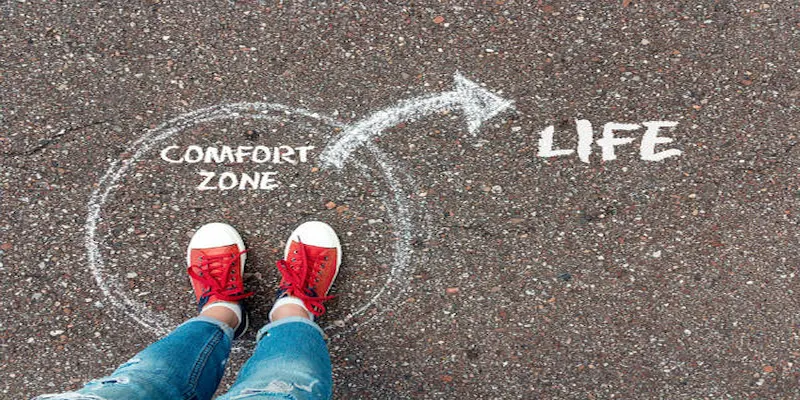
Stepping outside of our comfort zones is a pivotal aspect of personal growth. It is through new challenges and experiences that we expand our horizons, develop new skills, and cultivate resilience. In Activity 5 of our series, we delve into the significance of stretching comfort zones and provide age-appropriate suggestions and valuable tips to support and encourage children along this transformative journey.
The Importance of Stepping Outside Comfort Zones
Our comfort zones are like cozy nests that shield us from the unfamiliar and the unknown. While they offer a sense of security and familiarity, they can also restrict our personal growth. By venturing beyond these boundaries, we open ourselves up to a world of opportunities. Here’s why stretching comfort zones is essential:
Embracing New Challenges: By stepping outside our comfort zones, we challenge ourselves to tackle unfamiliar tasks or situations. This cultivates resilience, problem-solving abilities, and adaptability, enabling us to thrive in different environments.
Expanding Skills and Knowledge: Engaging in new experiences exposes us to diverse perspectives, cultures, and ideas. This broadens our understanding, enhances our skills, and fosters creativity, leading to personal and intellectual growth.
Building Confidence: Conquering challenges outside our comfort zones bolsters our self-confidence. Every success, no matter how small, reinforces our belief in our abilities and empowers us to take on more significant endeavors.
Age-Appropriate Challenges and New Experiences
When encouraging children to step outside their comfort zones, it is crucial to consider age-appropriate challenges that promote growth without overwhelming them. Here are some suggestions:
Early Childhood (3-5 years):
Participating in group activities or playdates to develop social skills.
Exploring new parks, playgrounds, or museums to foster curiosity.
Trying new foods or engaging in sensory activities to encourage exploration.
Elementary School (6-11 years):
Joining a sports team or enrolling in extracurricular activities to develop teamwork and perseverance.
Taking up a musical instrument or learning a new language to nurture creativity and cognitive skills.
Volunteering for community service projects to foster empathy and compassion.
Adolescence (12-18 years):
Participating in public speaking or debate clubs to enhance communication skills and self-expression.
Taking part in outdoor adventures or camping trips to promote independence and resilience.
Exploring different cultural experiences, such as traveling or trying diverse cuisines, to broaden horizons and promote tolerance.
Supporting and Encouraging Children
As parents, guardians, or mentors, it is essential to provide the right support and encouragement when children step outside their comfort zones. Here are some tips to help them navigate this process:
Create a Safe Environment: Ensure that children feel secure and supported. Let them know that it’s okay to make mistakes and that their efforts are more important than the outcomes.
Set Realistic Expectations: Encourage children to challenge themselves without overwhelming them. Gradual progression allows for a sense of accomplishment and builds confidence.
Celebrate Achievements: Acknowledge and celebrate every milestone, no matter how small. Positive reinforcement fosters motivation and self-belief.
Lead by Example: Show children that you are willing to step outside your own comfort zone. Your courage and resilience will inspire them to do the same.
Foster Open Communication: Create a space where children feel comfortable expressing their fears, concerns, and successes. Encourage them to reflect on their experiences and offer guidance and reassurance when needed.
Activity 6: “Feedback Corner”

The Value of Constructive Feedback in Developing a Growth Mindset
A growth mindset is a belief that our abilities can be developed through dedication, effort, and continuous learning. Constructive feedback acts as a catalyst in nurturing a growth mindset by challenging individuals to embrace new perspectives and improve their skills. Here’s why constructive feedback is invaluable in the development of a growth mindset:
Encourages self-reflection: Feedback provides an opportunity for individuals to reflect on their strengths, weaknesses, and areas for improvement. By embracing feedback, individuals can identify areas where they can grow and expand their skill set.
Drives continuous improvement: Constructive feedback helps individuals understand how their actions and behaviors impact their performance. It provides specific suggestions for improvement, allowing individuals to make meaningful adjustments and develop new strategies to overcome challenges.
Enhances self-awareness: Feedback offers an external perspective that may highlight blind spots or unnoticed patterns. This increased self-awareness empowers individuals to recognize their limitations and develop strategies to overcome them.
Promotes learning and adaptation: Constructive feedback encourages individuals to step out of their comfort zones and try new approaches. It promotes a mindset where failures are seen as learning opportunities and individuals are open to experimenting and adapting their strategies.
Creating a Safe Space for Feedback Discussions
To ensure that feedback discussions are productive and beneficial, it is essential to establish a safe and supportive environment. Here are some guidelines for creating a safe space:
Build trust: Foster an environment where individuals feel comfortable sharing their thoughts and opinions without fear of judgment or negative repercussions. Encourage open and honest communication, emphasizing that feedback is meant to help individuals grow.
Emphasize constructive intent: Establish ground rules that encourage feedback to be delivered in a constructive manner. Encourage individuals to focus on a specific behavior or action rather than making personal attacks. The goal is to help the individual improve, not criticize or demean them.
Active listening: Encourage active listening during feedback discussions. This means giving the speaker your undivided attention, refraining from interrupting, and seeking clarification when needed. Active listening fosters understanding and helps to prevent misunderstandings.
Provide a feedback framework: Establish a structured feedback framework that provides guidelines for both givers and receivers of feedback. This framework should outline the purpose of feedback, the process for giving and receiving it, and the expected behavior during feedback discussions.
Giving and Receiving Feedback Effectively
Effective feedback delivery and reception are essential for maximizing its benefits. Consider the following guidelines for giving and receiving feedback:
Giving Feedback:
Be specific and objective: Provide feedback that is specific, clear, and focused on observable behaviors or actions. Avoid vague or general statements and instead offer concrete examples to illustrate your points.
Balance praise and areas for improvement: Acknowledge the strengths and achievements of the individual before addressing areas that require improvement. This helps maintain a positive and supportive tone throughout the feedback conversation.
Use the “sandwich” approach: Begin and end the feedback conversation with positive and encouraging comments, while placing constructive feedback in the middle. This technique helps maintain a balanced perspective and reduces defensiveness.
Receiving Feedback:
Embrace a growth mindset: Approach feedback with an open mind and a willingness to learn and grow. See feedback as an opportunity to enhance your skills and knowledge rather than a personal attack.
Seek clarification and examples: If something is unclear or you require further information, ask for specific examples or elaboration. This helps you better understand the feedback and how it can be applied to your development.
Avoid defensiveness: Even if the feedback feels challenging or uncomfortable, remain composed and receptive. Remember that the intention is to support your growth, and defensiveness can hinder your progress.
Click here for more information regarding robotics camps for kids
Activity 7: “Growth Mindset Role Models”

A growth mindset embraces the belief that intelligence and abilities can be developed through dedication, effort and a passion for learning. By introducing children to inspiring individuals who embody this mindset, we can provide them with role models who exemplify the qualities of perseverance, resilience, and continuous learning.
In this blog post, we will explore the stories of remarkable individuals who serve as shining examples of growth mindset role models, encouraging young minds to embrace their own potential and pursue their dreams.
Elon Musk – Pushing Boundaries in Innovation:
Elon Musk, the visionary entrepreneur behind Tesla, SpaceX, and Neuralink, serves as a captivating role model for aspiring minds. His unwavering belief in the power of innovation and relentless pursuit of groundbreaking technologies showcase a true growth mindset. Musk’s ability to overcome setbacks, such as multiple failed rocket launches and public skepticism, demonstrates the importance of learning from failures and persevering in the face of adversity.
Serena Williams – Championing Resilience in Sports:
Serena Williams, a tennis legend with an unmatched record, personifies resilience and determination. Throughout her career, Williams has faced numerous obstacles, including injuries and personal setbacks. However, her unwavering commitment to honing her skills, coupled with her unyielding work ethic, has enabled her to become one of the greatest athletes of all time. Williams reminds us that setbacks are opportunities for growth and that resilience is a vital ingredient for success.
Malala Yousafzai – Advocating Education for All:
Malala Yousafzai, the youngest Nobel Prize laureate, is an advocate for education and a symbol of courage. Despite facing adversity and targeted violence for her activism, she continues to fight for the right to education, especially for girls. Yousafzai’s dedication to learning and her unrelenting pursuit of knowledge showcase her growth mindset. Her inspiring story reminds children that education is a powerful tool that can empower individuals to create positive change in the world.
Stephen Hawking – Embracing Intellectual Curiosity:
The late physicist Stephen Hawking revolutionized our understanding of the universe and defied the limits imposed by his physical condition. Hawking’s insatiable curiosity and his unwavering passion for exploring the mysteries of the cosmos embodied a growth mindset. Despite his profound physical challenges, he continued to contribute to scientific knowledge and inspire generations of scientists. Hawking’s story teaches children that a growth mindset can overcome any obstacle.
Encouraging Children to Learn from Role Models
As parents, teachers, and mentors, we play a crucial role in introducing children to growth mindset role models. Here are a few ways to inspire young minds to learn from these extraordinary individuals:
Expose children to diverse role models: Share stories, documentaries, and books about inspiring individuals from various fields to broaden their horizons.
Foster discussions: Engage children in conversations about the challenges these role models faced, how they overcame obstacles, and the lessons they learned along the way.
Encourage reflection: Prompt children to reflect on their own experiences and how they can apply the lessons learned from these role models to their own lives.
Nurture a growth mindset environment: Create an environment that promotes learning, growth, and resilience. Encourage children to embrace challenges, view failures as opportunities for growth, and celebrate their efforts rather than focusing solely on outcomes.
Activity 8: “Mindset Mindfulness”
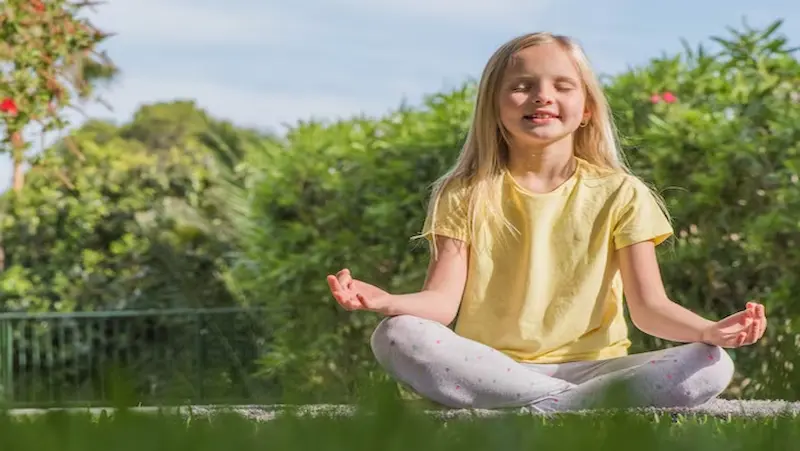
The Connection between Mindset and Mindfulness
Our mindset significantly influences how we perceive and respond to the world around us. A fixed mindset, characterized by a belief that our abilities and intelligence are fixed traits, can hinder our personal growth.
On the other hand, a growth mindset, which recognizes that abilities can be developed through dedication and effort, opens up a world of possibilities. Mindfulness acts as a catalyst for cultivating a growth mindset by creating a mental environment that is receptive to change, learning, and self-improvement.
Mindfulness Exercises for Self-Awareness and Positive Thinking
Body Scan Meditation: Sit or lie down in a comfortable position and bring your attention to different parts of your body, starting from your toes and slowly moving up to your head. Notice any sensations, tensions, or areas of discomfort without judgment. This exercise enhances self-awareness and helps you develop a deeper connection with your physical self.
Gratitude Journaling: Take a few minutes each day to reflect on the things you are grateful for and jot them down in a journal. This practice shifts your focus towards positive aspects of your life, fostering a positive mindset and cultivating gratitude.
Mindful Breathing: Find a quiet place and bring your attention to your breath. Focus on the sensation of the breath entering and leaving your body. Whenever your mind wanders, gently guide it back to the breath. This exercise helps cultivate present-moment awareness and improves your ability to stay focused.
Positive Affirmations: Choose affirmations that resonate with you and repeat them silently or out loud. Affirmations are positive statements that reinforce your beliefs and goals. They can help rewire negative thought patterns and promote a growth mindset.
Explore more about python for kids here
The Role of Mindfulness in Cultivating a Growth Mindset
Mindfulness serves as a foundation for developing a growth mindset by cultivating self-awareness, non-judgment, and the ability to embrace challenges. When we practice mindfulness, we become more attuned to our thoughts, emotions, and reactions.
This heightened self-awareness enables us to identify limiting beliefs and negative thought patterns that may be holding us back. By observing these thoughts without judgment, we can detach ourselves from them and create space for new, empowering beliefs.
Furthermore, mindfulness allows us to approach challenges and setbacks with a sense of curiosity and openness. Instead of viewing failures as indicators of our limitations, we see them as opportunities for growth and learning. By staying present and non-judgmental, we can better navigate obstacles, develop resilience, and embrace the process of self-improvement.
Activity 9: “Gratitude Jar”

The Power of Gratitude in Fostering a Growth Mindset
Gratitude serves as a catalyst for a growth mindset, which is the belief that our abilities and intelligence can be developed through effort and perseverance. Here’s why gratitude plays such a crucial role in fostering a growth mindset:
Shifting focus to abundance: Gratitude helps us shift our attention from what is lacking to what we already have. By acknowledging and appreciating our achievements, efforts, and the people who support us, we develop a positive perspective that fuels our motivation to grow and learn.
Building resilience: Cultivating gratitude encourages us to embrace challenges and setbacks as opportunities for growth. When we approach difficulties with gratitude, we can extract valuable lessons and see them as stepping stones on our journey toward success.
Fostering self-awareness: Gratitude invites us to reflect on our actions and choices, promoting self-awareness. It helps us recognize the effort we put into our endeavors and the progress we’ve made, reinforcing the belief that our abilities can improve with dedication and practice.
Creating a Gratitude Jar or Journal with Your Children
Now, let’s delve into the practical steps for creating a gratitude jar or journal with your children:
Step 1: Select a vessel or journal: Choose a container for your gratitude jar or a journal where your children can record their expressions of gratitude. It could be a mason jar, a decorative box, or a dedicated notebook.
Step 2: Decorate and personalize: Encourage your children to decorate the jar or journal with colorful papers, stickers, or drawings. Personalizing the container will make the gratitude practice more engaging and meaningful for them.
Step 3: Establish a routine: Set aside a specific time each day or week for gratitude reflections. It could be during family mealtime or before bedtime. Consistency is key to establishing this healthy habit.
Step 4: Express gratitude together: Encourage your children to share one thing they are grateful for during each gratitude session. You can take turns or write them down and place them in the gratitude jar.
Step 5: Reflect on achievements and efforts: In addition to everyday blessings, guide your children to appreciate their personal achievements and efforts. Encourage them to write down and acknowledge the progress they’ve made, no matter how small.
Step 6: Celebrate milestones: When the gratitude jar is filled or the journal is completed, celebrate your children’s progress. Reflect on the journey they have taken and recognize the positive impact gratitude has had on their mindset.
Activity 10: “Growth Mindset Reflections”

Celebrate Progress
Reflection is not only about identifying areas for improvement; it’s also an opportunity to celebrate achievements and acknowledge personal growth. Encourage children to think about their accomplishments and the progress they have made so far. Some prompts to consider are:
a) What is one goal you set for yourself that you have achieved?
b) What was the most challenging task you faced, and how did you overcome it?
c) Think about a time when you felt proud of your effort or improvement. What did you learn from that experience?
By celebrating progress, children develop a positive outlook and gain confidence in their abilities.
Identify Areas of Growth
Self-reflection involves recognizing areas where improvement is needed. Help children think about specific aspects of their growth mindset journey that they can focus on. Here are some prompts to guide their reflections:
a) Is there a particular skill or subject in which you have noticed growth or improvement?
b) What challenges have you faced recently, and how have they helped you grow?
c) Think about a time when you struggled with a task. How did you approach it, and what did you learn from that experience?
Identifying areas of growth helps children recognize their strengths and areas where they can further develop their growth mindset.
Set New Goals
Encourage children to set new goals that align with their growth mindset journey. These goals should be specific, measurable, attainable, relevant, and time-bound (SMART goals). Here are some prompts to inspire them:
a) What is one area in which you would like to see more growth or improvement?
b) Think about a new challenge you would like to take on. What steps can you take to achieve it?
c) Is there a skill you would like to develop further? How can you incorporate it into your daily routine?
Setting new goals gives children direction and purpose, fueling their motivation to continue learning and growing.
Understanding child development is closely linked to promoting growth mindsets. Recognizing that children’s abilities can evolve with effort and learning helps parents and educators foster resilience, curiosity, and a willingness to embrace challenges in young minds.
Conclusion
In conclusion, it is essential to inspire parents to be supportive guides in their children’s growth mindset development journey. A growth mindset is a powerful mindset that enables individuals to embrace challenges, persist through obstacles, and ultimately achieve their full potential. When parents actively foster and encourage a growth mindset in their children, they lay the foundation for lifelong learning, resilience, and success.
By understanding the fundamental principles of a growth mindset themselves, parents can become effective role models for their children. They can demonstrate the importance of embracing mistakes as opportunities for growth, emphasize the value of effort and perseverance, and cultivate a sense of optimism and belief in their child’s abilities. Through their actions and words, parents can communicate the message that intelligence and talent can be developed with practice and dedication.
Supportive parents also play a crucial role in creating a nurturing and empowering environment for their children. They can provide constructive feedback that focuses on effort, progress, and strategies, rather than fixed traits or outcomes. By reframing challenges as exciting opportunities and celebrating small victories along the way, parents can instill a sense of confidence and motivation in their children.
Ultimately, when parents take an active and supportive role in their children’s growth mindset development journey, they provide them with the necessary tools and mindset to navigate the challenges of life successfully.
By inspiring their children to believe in their ability to learn and grow, parents empower them to embrace new opportunities, overcome obstacles, and achieve their dreams. The impact of parental support in fostering a growth mindset can be transformative, shaping not only a child’s academic achievements but also their personal and professional growth in the years to come.
BrightChamps. also provides engaging coding classes for kids, offering a dynamic learning environment where children can explore the exciting world of programming. Through interactive lessons and hands-on projects, kids can develop valuable coding skills that enhance their problem-solving abilities, creativity, and logical thinking, preparing them for a technology-driven future.
BrightChamps page is a valuable resource filled with insightful articles and guides that cover a wide range of educational topics. Whether you’re seeking study tips, parenting advice, or information on child development, the blog offers a wealth of information to support students, parents, and educators on their educational journeys.
Frequently Asked Questions
A1: A growth mindset is a belief that abilities and intelligence can be developed through effort and learning. It is important for children because it empowers them to embrace challenges, persists in the face of setbacks, and see failures as opportunities for growth.
A2: Introduce the concept of a growth mindset by praising effort, emphasizing the power of “yet,” and encouraging them to view mistakes as learning opportunities. Teach them that their abilities can improve through practice and hard work.
A3: Signs of a fixed mindset in children include avoiding challenges, giving up easily, feeling threatened by the success of others, and believing that their abilities are fixed traits.
A4: Developing a growth mindset in children fosters resilience, motivation, and a love for learning. It enhances their problem-solving skills, increases their self-confidence, and helps them adapt to new situations more effectively.
A5: Yes, activities like setting achievable goals, encouraging self-reflection, teaching positive self-talk, and using open-ended questions can help foster a growth mindset in children.
A6: Encourage your child to embrace challenges and setbacks by praising their effort, reframing failures as learning opportunities, modeling resilience, and emphasizing the importance of perseverance.
A7: Yes, some recommended books on growth mindset for children include “The Girl Who Never Made Mistakes” by Mark Pett and Gary Rubinstein, “Your Fantastic Elastic Brain” by JoAnn Deak, and “Growth Mindset for Kids” by Mary Fern.
A8: Parents and educators can reinforce a growth mindset by providing constructive feedback, promoting a safe and supportive environment, setting high expectations, and celebrating effort and progress rather than just outcomes.
A9: Strategies for helping children set and achieve goals with a growth mindset include setting specific and achievable goals, breaking them down into smaller steps, creating action plans, tracking progress, and celebrating milestones along the way.
A10: Interactive activities that promote a growth mindset in kids include creating a “yet” list (things they haven’t accomplished yet), engaging in reflective journaling, solving challenging puzzles or brain teasers, and participating in group discussions about overcoming obstacles and learning from mistakes.

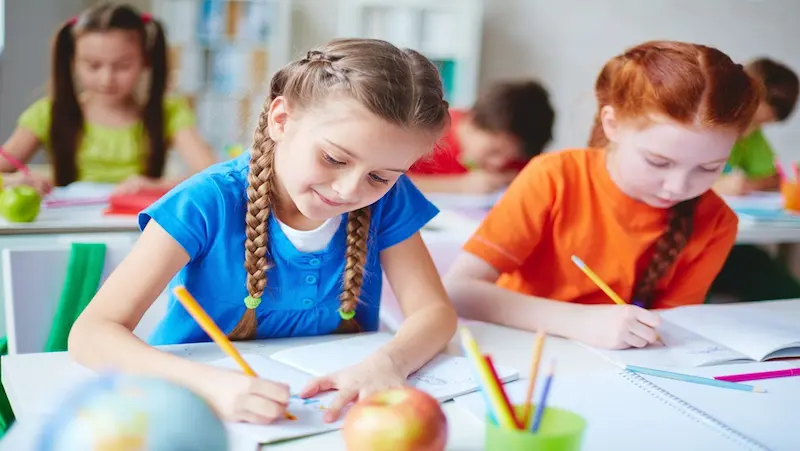
 We are an army of educators and passionate learners from BrightChamps family, committed to providing free learning resources to kids, parents & students.
We are an army of educators and passionate learners from BrightChamps family, committed to providing free learning resources to kids, parents & students.













